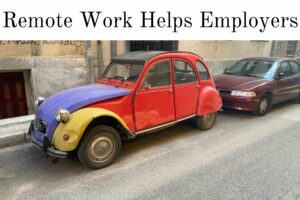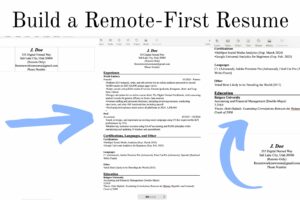If you’ve dreamed of traveling the world on income just rolling through your bank account, you’re not alone. Passive income has been all of the rage throughout the past decade, but numerous people are still trying to figure out… How do I do it?
Passive Income: Money inflows that require little maintenance. It’s a common myth that there is true passive income. Every once in a while, you might need to do taxes or other paperwork.
Frankly, trying to get wealthy via passive income is near impossible. (You are operating at the margin with most items. In my opinion, wealth can be only obtained through generational or long-term buy-and-hold investing.)
That being said, in order to do any of these passive income ideas, it’s going to take sacrifice. And with everyone’s comfort level different, I am going to split it up via three different risk profiles. But we do this to travel and experience the current moments. And when you are eating lasagna in Rome next to the Vatican, this sacrifice will be worth it. (Just visit Rome in the winter, because it will be a lot cheaper.

Table of Contents
Low-Risk Passive Income Ideas
For the low-risk category, some people may view some items as no-risk. However, I don’t think there is anything appropriately deemed no-risk. At the very least, you will be spending lots of hours researching, creating, and maintaining these items. So much so, you might even wonder why I call this “passive income.”
Within this sphere, I view these as the opportunity to build a portfolio. Yes, you may not be able to make money initially. However, these all work in tandem with each other ten years later. (If technology doesn’t change, which it will.)
Finally, you can spend no money or little money for these items. If you spend a little, it might be worth it for a superior product output.
1. Stock Photography & Videography
If you aspire to be a content creator, one of the first passive income ideas you should think about is stock photography and videography. As much as I hate to say it, you may not make as much money as they did in the mid-2010s, even when it comes to video. However, the true experience of creating a portfolio is the experience that you will be getting.
Learning about 4k vs 1080p, 30 MP vs 20 MP, dynamic range in APS-C versus Full-Frame sensors, and so much more. With experience comes better results.
Also, one additional cost within the stock photography and videography route (beyond just the camera) is the post-production software. Expect to spend a couple hundred dollars per license depending on which program you use.
Now, I know what you are thinking…. What about Artificial Intelligence and Generative Fill within the Adobe Suite?
I debate back and forth, as someone who enjoys and is reliant on photography, about these new tools. However, I’m just going to take time, enjoy the moment, and know that AI cannot create the best sunsets in the world.
2. Starting a Blog/YouTube Channel/Podcast
Becoming a blogger, YouTuber, and podcaster used to be unheard of. However, in the 2020s, I would say it’s the equivalent of being a rockstar in the 70s. Almost everyone would like to be one.
There is some debate if the field is too saturated, as the level of both AI writing and low barriers to entry create an easy experience. (You can create a free website almost anywhere.) However, I firmly believe that you should try once. Experiment with each different platform for a month. (Which is what I did) And figure out where your niche is.
3. Social Media
If you combine all three of these first items: social media, blogging, podcasting, YouTubing, and stock photography, videography, and more, you may be on your way to becoming the modern-day influencer.
However, it’s going to take some work. Just remember you are building a business or brand. And if you cannot figure out what your brand is, more than likely you are the brand.
Within social media, there are ways to make residual income on previous and old videos. This can be found in YouTube partnerships, the TikTok creator’s pool, or other pots of money.
Brand deals litter active income, and this is where you make your money. Remember: Singers and other artists don’t make their money on albums. Instead, they make most of their money on tour. Influencing is the same way.
4. Selling T-Shirts/Merch online
In almost every content creator’s catalog or list, there’s merchandise. If you have a large-enough following, and are not somebody named Mr. Beast, there are really two great ways to do this.
A: Spring
I have seen a couple of YouTubers use Spring, as there is no shipping, inventory, or product that you have to manage. Instead, you just designed the package with your intellectual property (logo) or something of that sort. On the downside, you lose the opportunity to evaluate quality control and the full-profit-margin.
B: Amazon MarketPlace or Shopify
These platforms have become less popular lately, but you can open up your own platforms. To avoid piling inventory, you could think about drop-shipping items from Yiwu, China. Again, just make sure to request inventory samples prior to shipping things out.
The key to Amazon marketplace in particular is your first twenty-five reviews or so. (This is the key to programs such as Airbnb, too.) Encourage discounts to purchases, tell your friends and family about the product to see what they think, and I am sure there is more.
Meanwhile, the key to Shopify is SEO. Amazon is a marketplace, while Shopify is your personal store front. Google will not care as much, so you need to provide more work up front.
5. Rewards Credit Cards
*For my American readers
I debated putting credit cards on this list, as I do firmly believe that credit cards can be a trap for numerous people. So much so, I really don’t recommend using a travel credit card unless you have most of your student loans paid off. *Cough, Americans
However, if you manage your spending well, I find no reason that you should not take advantage of sign-up bonuses. I have an entire post of different credit card options, here.
Bonus Tip: Saving money with credit cards?
So, here’s a little secret about me. I don’t have a vehicle. However, about once-per-year, I need to rent a car. It might be because I’m moving around the US, or I need something for an odd trip.
As I don’t have a vehicle, I don’t have car insurance. (Seriously, not having a car saves you so much money.) However, my Chase Sapphire Preferred does have car insurance. Take away the $50 hotel credit aside, and I still come out ahead every year with this card.
6. Create a Course/Write a Book
Another thing that has since slowly died out since the pandemic, creating a tangible product is exceptional for cash flow. After all, you can automate the system to deposit the money with every purchase.
However, to take advantage of this ecosystem, you must be an expert in something.
7. Affiliate Links and Rewards Programs
Affiliate links used to be frowned upon, but there is a growing number of people who use them in almost everyday occasions. Credit cards, even if you are not a professional, have referral links for your friends. There are sometimes bonuses at local salons that ask if someone referred you. We are and have always been, a word of mouth economy.
Just today, I found out the company I have been using to rent camera gear has a rewards program. (And I have used them exclusively for a year!)
8. Email List
An email list has one singular purpose: leads.
Through a variety of call-to-actions, use your email list to promote your blogs, podcasts, affiliate links, etc. Make sure to follow the consumer data privacy laws, however.
9. Work a Remote Job That You Can Automate
I have become disheartened about the seemingly endless pullback of telework, lately. However, if you can find a job that you can automate, kudos to you.
Medium-Risk Passive Income Ideas
Disclaimer: I am not a financial advisor, and these are simply recommendations on potential investment options. Please consult your personal financial advisor to determine risk tolerance and financial goals. The following investments can/will decrease in value. (To the point of $0)
10. Dividend Stocks
I have known a few investors that swear by the company’s dividend. They believe that only companies in a healthy financial position pay dividends. (Sometimes true.) However, from experience of owning dividend stocks (VZ, CVS, BEN), they rarely appreciate. So much so, it’s been about five years since I purchased those stocks, and I reviewed their return. To this day, it’s nothing. Disclosure: I don’t own any of those stocks anymore.
Again, it’s hard to recommend dividend stocks right now. My high-yield savings account is about 4.15%, which is only a fraction smaller than the yield on the stocks above, without the risk.
11. Real Estate Investment Trust (REIT)
If you are like me, and you are aware that you will never be able to afford a home due to the cost of living crisis, then the only way to take advantage of the market is via a REIT.
A real estate investment trust acts similar to a stock, as the company’s entire goal is to purchase income-producing real estate with real returns. Typically, they are traded on the stock market. (Some are off-market, but few people have the capital for that.) Additionally, according to the SEC, at least 90% of their taxable income must be paid out in the form of dividends.
The key to determining the best REIT for you is by reading the prospectus. Does the program focus on the Pacific Northwest? Midwest? Mid-Atlantic?
Downsides of REITs are the fluctuations of the commercial real estate sector, and the lack of taxable benefits.
12. Domain Investing
If you elect to go about domain investing, I hate you. (Not literally)
Domain investing is picking generic domains, i.e. worldembark.com, and registering them for a minimal amount. Typically, the price is about $12 per year. Then, when somebody approaches you wanting to purchase the domain for investing into IP or creating a business, you sell the domain to them.
It really forces people to think creatively.
13. Vending Machines
I have actually heard about a lot of people having success with vending machines, and the key is to treat them like a service.
After purchasing the item (often for a couple thousand dollars) and figuring how to stock the inventory, approach high-traffic areas such as dealership waiting rooms and doctor’s offices. (Basically, anywhere people cannot leave for a time.) However, because you are offering a service, make sure to not actually pay rent for this space. This will make your margin smaller.
High-Risk Passive Income Ideas
14. Real Estate
Real Estate. Someday, I would love to be able to purchase a home and live-in it. However, with high costs, high interest rates, and expensive insurance, it’s becoming increasingly improbable that I will be able to purchase a house.
That being said, if you can afford it, one great way to make money is via buy, rent, and hold real estate. There are numerous tax advantages for property owners around the world, and you could rent it out.
However, owning a home can wreck your finances if you live on a paycheck-to-paycheck mindset. There is the maintenance cost. Replacing a roof is infrequent, but it can cost several thousands of dollars. And the same could be said for numerous other things such as a boiler, a tree falling on part of your house, and washing machines. I’ve always been told purchasing a house is purchasing a lifestyle, unless it creates some form of cash flow.
If you are renting, there is so much to think about, too. What is the occupancy rate for your apartment? (Or how long does it sit?)
Here are just some general things, again, that you need to think about.
- I know that the turnover rate for apartments is usually less than one–month.
- What are the laws restricting rentals in your area? If I miss my rental payment, I’m not evicted for several months at a time. Other states have less friendly tenant laws.
- If somebody destroys your home via permanent damage, will I be able to sue?
- Are there laws restricting medium-term vs long-term rentals?
- What sort of property insurance do I need?
15. Growth Stocks
Growth stocks are stocks, like dividend stocks, but instead of focusing on paying out dividends, they reinvest their money into the company. With this money, they hope to grow at a faster rate. (Either gross income, net income, or both) In this scenario, you are relying on income from stock appreciation. (What you purchased for versus what you sold)
However, growth stocks are riskier. Sometimes, projects fail and it undermines the entire business strategy. Other times, the business goes bankrupt and the stock goes to zero.
There is no guarantee that any of the options will work.
16. Market Trends
About once-per-year, there is a theme in the stock market or other exciting new program. Just in my lifetime, I have seen everything from oil, Gamestop and AMC, Bitcoin, NFTs, and now artificial intelligence.
If you are able to operate within a relatively quick time frame, you can make some quick cash. However, we are talking only about a lifespan of a month.
On the downside: When these items crash (it’s inevitable), they do crash fast and often lose over 50% of their value.
If you’re looking for the next opportunity, just ask your neighborhood stock bro. He should start putting you in the right direction.
17. Peer to Peer Lending (P2P)
With fin-tech becoming the modern-day banking, there are starting to become a variety of decentralized platforms that allow for peer-to-peer lending. Yes, there are venture capital funds and other programs.
Peer-to-peer lending operates on the margin, as they will combine both applicants and lenders into one platform.
There is a lot of risk within this system. I was reviewing a couple of websites, and the interest rates that were offered for sub-prime borrowers often exceeded 10% over current credit card APR.
Plus, the likelihood of you receiving anything if the debtor defaults is almost zero.
18. Purchasing a Business
Starting and maintaining a business is an emotional investment. People sweat, bleed, and even die due to stress of running their business.
So, if you elect to purchase a business, you need to know the circumstances you are inheriting.
However, if you are entering into a favorable situation, you should recoup your money relatively quickly. There are numerous service-based industries that rely on small-town feeling businesses that will never go away. Laundromats, carwashes, storage units, restaurants, etc.
For these businesses, what’s important is knowing your yield based on your purchase price. You need to be profitable within a couple of years, so these may involve some creative scaling or introduction of new products.
I.e. One thing I repeatedly hear about is purchasing a car wash. They introduce a subscription plan, which is the price of three car washes or so per month. They can accurately estimate their cash flow, and the customers are rewarded for their loyalty.
Low-Risk Active Income Ideas
19. Remote Work
Alright, here’s my complaint section about employers.
A) How do you expect us to live in the city you require us to work in? Houses now cost $400,000 on average, my monthly food budget is about four hundred dollars, not forgetting health insurance, spending money on commuting costs (and more importantly a long commute is really time wasted, in my opinion.) Finally, to do that for 60,000 is almost impossible.
B) If you said workers were more productive at home, then why did you force people back into the office? Why, especially, do you keep amending contracts?
Sincerely, all workers who were promised remote work concessions, and they never showed up.
20. Workaway Programs
I have only completed one work-away program throughout my travels (actually in the United States), and I found it to be a pretty good experience. So, you might be wondering “how they work?”
Workaway programs are opportunities that provide free housing (occasionaly food) in exchange for work on properties. Sometimes, this might look like farming, or it could look like working at a hostel, too.
There are a variety of programs that have slowly gained momentum such as WorkAway and Worldpackers. However, you might be able to make informal arrangements as well.
21. House Sitting
House sitting is extremely competitive, believe it or not. I’ve never got into it, but I hear that people will plan itineraries for pets, have lists of chores that need completed, and do so much more beyond what is asked of them.
That being said, house sitting while also working a part-time job might be the best avenue for traveling long-term.
High-Risk Income Ideas
22. Starting your own business
I believe it’s a lot easier to purchase a business than start a business. Most business you purchase despite some improvements can operate in a turn-key model. (Unless they are distressed.)
However, starting your own business requires market research, purchasing large amounts of equipment (usually), and even hiring and managing employees.
Plus, there is the other knowledge that you may not know as well including taxes, how to deal with difficult people, and remaining relevant.
23. Foreign Exchange
Foreign exchange is a form of trading currencies, and it is hoping to get more than what you received. For example, if you purchase a dollar for 80 pence, and then you sold the dollar for 1.20 quid, you would be ahead .40 p. As long as inflation didn’t go up (doubt it), you would get more than what you spent. Foreign exchange is quite risky, as you never quite know if a recession will affect each country the same, if inflation changes in one country, what happens in the other, etc.
24. Airbnb
Airbnb’s decline as a short-term stay platform, and the growth of its high value, experience-based properties is interesting to watch. However, because of this, the target demographic has shifted. Budget travelers look away, as there are now cleaning fees, service fees, municipal taxes, and chore lists. All of a sudden, a hotel or hostel starts to sound appealing.
There are so many keys to owning an Airbnb, that I would classify it has a high-risk, active income stream. You need to be able to receive and implement constructive feedback, design systems for everything from messaging to cleaning, and of course the growing bureaucracy of owning short-term rentals means paperwork and laws for days.
Another potential risk of Airbnb hosting is the economy. As travel is a luxury good and not deemed essential, you are one of the first parts of people’s budget that is cut. Luxury goods often have a margin, yes. However, you (more than likely) still have a mortgage.
25. Leasing your Vehicle
After living without a vehicle for over two years at this point, I have become aware of the numerous rent-your-vehicle-for-cash companies. (Sort of like Airbnb, but for cars) For the person leasing, depending on which program you use, it can be cheaper than renting from an official dealer such as Hertz. However, there may be longer minimums such as requiring weekly car rentals.
From the lender perspective, however, I see numerous potential problems that make this category exceptionally high-risk.
Quality Control: Perhaps I am pessimistic. However, you can have instructions such as “no smoking or pets in the vehicle.” However, if someone does smoke, how will you be able to prove it?
Liability: I imagine there are numerous lawsuits bound to happen. If somebody is involved in a wreck (God forbid), and they found out the crash occurred due to negligence on your part.. Faulty brakes, etc.
Insurance? Forget insurance through the company. How will this affect your primary insurance?
If something goes wrong, how will you be able to survive without your car? Sometimes, repairs can be costly and take time. (I’ve seen it take over a month for a car part to arrive due to shortages.) If you are not needing the vehicle. It’s fine. However, you might not be able to lease the car out if something goes wrong.
By the time you incorporate depreciation, maintenance costs, and other expenses such as the car payment and insurance, are you really coming out ahead? I see this a lot with Doordash and Uber Drivers, they are not making as much as the companies claim. (Source: I was one)
Closing Thoughts
Alright, as I close this piece, I have a lot of controversial thoughts mainly about income and traveling. Right now, I am seeing numerous potential influencers save some money (often between 5-10,000 USD), fly overseas and stay until they run out of money, and then they fly back. They do this repetitively.
Now, this type is not new. However, I am hesitant to encourage this lifestyle. Yes, it’s awesome. However, you should think about the long-term ramifications, too. Do you want to be able to travel exclusively on a budget the rest of your life? What does your lifestyle look like when you are forced to slow down? Do you want to have kids? Etc.
This is why I encourage people to have a plan for making money, and not just one for spending it when they are traveling long-term.





